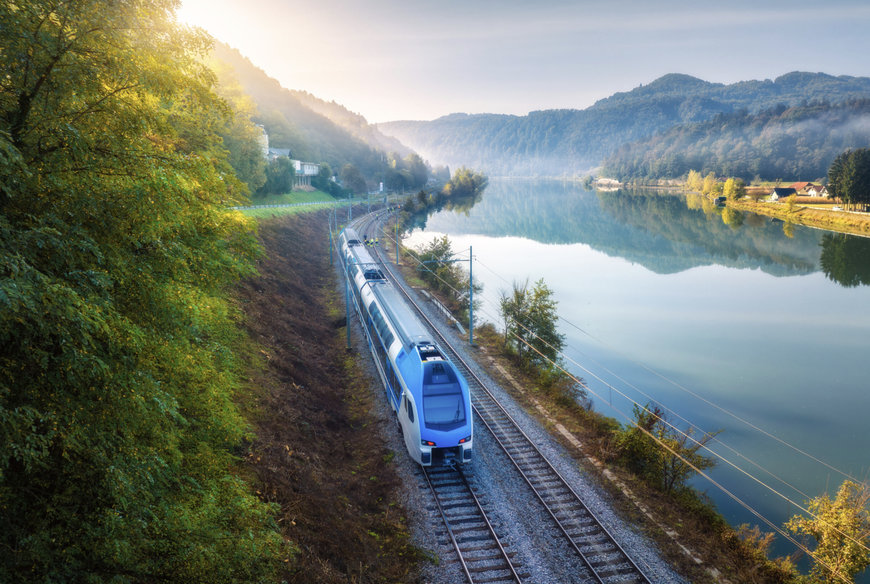railway-international.com
06
'24
Written on Modified on
The benefits of train refurbishment
SEGULA Technologies is playing a key role in making our mobility more environmentally friendly: increasing the supply of rail equipment is the objective, despite the shortage of new equipment to meet the demand for both passenger and freight transport.

In this interview, Pierre-Emmanuel Rabec, Rail Technical Director, discusses a range of renovation issues, including technical challenges, sustainable renovation strategies and emerging technologies that are redefining industry standards.
Why is refurbishment a viable solution for rail operators?
Renovation offers many advantages for rail operators. First of all, it extends the lifespan of existing assets at a cost and schedule that are competitive with the opportunity cost of waiting for new equipment to be delivered over an increasingly long period.
What’s more, it allows the integration of modern technologies to build customer loyalty (comfort, services, passenger information) while improving the energy performance of trains (Driver Assistance System, to reduce fuel consumption, etc.).
For example, as part of European funding for traction energy that emits fewer greenhouse gases, we are integrating H2 fuel cell technologies, or modifying the power supply/combustion system to use liquefied natural gas on diesel locomotives or multiple units.
Saving weight, either by using the new materials proposed for new equipment, which of course comply with smoke and fire standards, or by revisiting certain technical choices made in the past, is one of the optimisations targeted by the renovation engineering study.
What are the costs of refurbishment and how does SEGULA manage the risks associated with the business case?
Trains are generally designed to last 30 to 40 years. Halfway through their life cycle, they are completely overhauled: we often take advantage of this mid-life overhaul to carry out an initial renovation of the equipment.
For example, we have helped operators to renovate the restaurant carriages on high-speed Ouigo and ex-Thalys trains, to improve customer comfort. The activities range from the choice of materials, sometimes with our own styling, to the compilation of plans, which enable the work to be carried out.
When it comes to extending the life of an asset such as rolling stock, the challenge is to ensure that the cost of refurbishment does not exceed that of acquiring new equipment in terms of Life Cycle Cost. At the moment, the shortage of traction equipment is encouraging refurbishment operations, because of the additional cost (known as the opportunity cost) to rail operators of waiting for rolling stock (which is rarely delivered as planned).
The cost study is therefore a crucial and meticulous stage: we bring together a multi-disciplinary team, around a designer, who will reconsider the re-engineering, the sub-systems (air conditioning), the interior fittings and equipment such as seats.
It often happens that on old rolling stock, the documents needed to know the ‘as maintained’ condition of the equipment to be renovated are missing. In these cases, we use digital technologies such as scanning and image processing to reconstitute the initial ‘photo’ of the project. The specifications resulting from the study are then submitted to the manufacturers, challenged to obtain the best cost estimate for the project. The operator thus has the information it needs to establish its business case.
Is extending the life cycle of existing fleets a significant advantage?
The business case depends on each operator, and the decision to renovate in order to extend the life of the assets involves several players: the owner, the operator, the safety authorities, with the possibility of European or public funding. We support all the players involved in the renovation project, from the design stage right through to APIS (Authorisation to Place In Service).
How do you see the future of train refurbishment and its impact on the greening of the rail sector?
I’m very optimistic about the future of train refurbishment. With advances in technology and a growing awareness of the importance of sustainability, we will see more and more refurbishment projects. These initiatives will help to reduce the rail industry’s carbon footprint and create more efficient, economical and environmentally friendly transport solutions. Ultimately, train refurbishment plays a crucial role in the transition to greener mobility.
The arrival of private operators in Europe is stimulating refurbishment, as they are able to buy second-hand equipment or existing fleets to refurbish them, for want of the means to buy new. In addition, European obligations linked to the ETCS/ERTMS system require existing equipment to be upgraded to make trains interoperable on a European scale.
www.segulatechnologies.com

